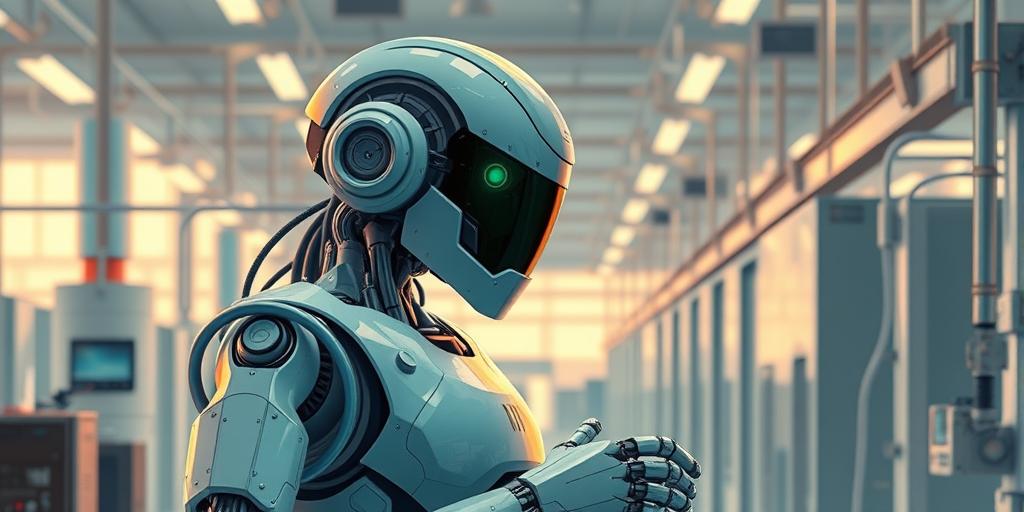Have you ever wondered about the incredible advancements in automation? Prepare to be amazed as we journey into the exciting world of AI and robotics and their transformative roles in the automation evolution! This isn’t your grandpappy’s automation; we’re talking about a revolution that’s changing the way we live, work, and interact with the world around us. From self-driving cars to smart homes, the impact of AI and robotics is undeniable and only getting more profound. Let’s dive in and uncover how these technologies are reshaping industries and our daily lives.
The Rise of AI-Powered Automation
Artificial intelligence (AI) is no longer a futuristic fantasy; it’s a powerful force driving automation forward at an unprecedented pace. AI algorithms are capable of learning, adapting, and making decisions with minimal human intervention. This capability has unleashed a wave of intelligent automation systems across various sectors. Consider the impact on customer service, where AI-powered chatbots provide instant support, freeing up human agents for more complex tasks. This type of automation increases efficiency and improves customer satisfaction. Moreover, AI is revolutionizing data analysis, allowing businesses to glean actionable insights from massive datasets, informing strategic decisions and optimizing processes. Predictive maintenance, another key application, utilizes AI to anticipate equipment failures, reducing downtime and maximizing operational efficiency. The potential of AI in automation is limitless, shaping a future of unparalleled productivity and innovation. Imagine a world where AI predicts traffic flow, optimizes energy grids, and personalizes healthcare. This is not science fiction; it’s the exciting reality of AI-powered automation.
AI in Manufacturing and Logistics
The manufacturing and logistics industries are at the forefront of the AI and automation revolution. Smart factories utilize AI-powered robots for tasks such as assembly, packaging, and quality control. These robotic systems work tirelessly and precisely, leading to improved product quality and reduced production costs. In logistics, AI optimizes warehouse operations, manages inventory, and streamlines delivery routes, ultimately reducing delivery times and improving overall supply chain efficiency. AI’s capacity to analyze complex data streams allows for the prediction of disruptions and proactive mitigation strategies, resulting in more robust and resilient supply chains. This level of automation is not merely incremental; it’s a fundamental shift in how goods are produced and distributed globally. The potential to enhance productivity and minimize waste through AI-driven automation in these sectors is enormous and will continue to grow.
AI in Healthcare and Finance
The applications of AI in healthcare and finance are equally transformative. In healthcare, AI algorithms assist with diagnosis, personalize treatment plans, and accelerate drug discovery. AI-powered medical imaging analysis can detect diseases earlier and with greater accuracy than traditional methods, leading to improved patient outcomes. In finance, AI algorithms are used for fraud detection, risk assessment, and algorithmic trading. This improves the accuracy and speed of financial transactions while minimizing risk. The ability of AI to process vast amounts of data and identify patterns invisible to human analysts allows for more informed decision-making in both industries. This increased accuracy and efficiency is not only beneficial for businesses, but also directly enhances patient care and financial stability.
Robotics: The Physical Arm of Automation
While AI provides the brains, robotics provides the brawn of the automation revolution. Robots are physical entities capable of performing a wide array of tasks, from intricate surgeries to dangerous industrial operations. Collaborative robots, or cobots, are designed to work alongside humans, enhancing productivity and safety in various workplaces. Cobots are especially useful in environments requiring precision and repetitive tasks. The integration of AI and robotics leads to even greater capabilities. AI-powered robots can adapt to changing environments, learn from experience, and improve their performance over time. This adaptability allows robots to handle increasingly complex tasks and operate in dynamic settings. The future of robotics in automation is one of continued sophistication and seamless integration with human workers, creating highly efficient and productive working environments.
Robotics in Diverse Industries
The reach of robotics extends far beyond manufacturing and logistics. In agriculture, robots are used for precision planting, harvesting, and crop monitoring. This enhances yields while minimizing resource usage. In exploration, robots explore hazardous environments, such as deep-sea trenches and other planets, gathering valuable data and expanding our understanding of the universe. In the service industry, robots handle tasks such as cleaning, delivery, and customer service, improving efficiency and freeing up human workers for more interactive roles. The versatility and adaptability of robotics make it a crucial component of the ongoing automation evolution across an incredibly broad range of industries.
The Future of Robotics and AI in Automation
The future of AI and robotics in automation is bright and full of potential. As technology continues to advance, we can expect to see even more sophisticated and capable systems. The convergence of AI and robotics will lead to autonomous systems capable of operating with minimal human supervision. This will have a profound impact on various industries, creating new opportunities and challenges. It’s a time of exciting innovation, and it will be crucial to address the ethical considerations and potential societal impacts of these technological advancements. The automation revolution is underway, and AI and robotics are leading the charge.
Embrace the future. The world of AI and robotics in automation is constantly evolving, creating a thrilling and transformative journey for us all. Learn more about this fascinating field and prepare for a future filled with incredible possibilities!




